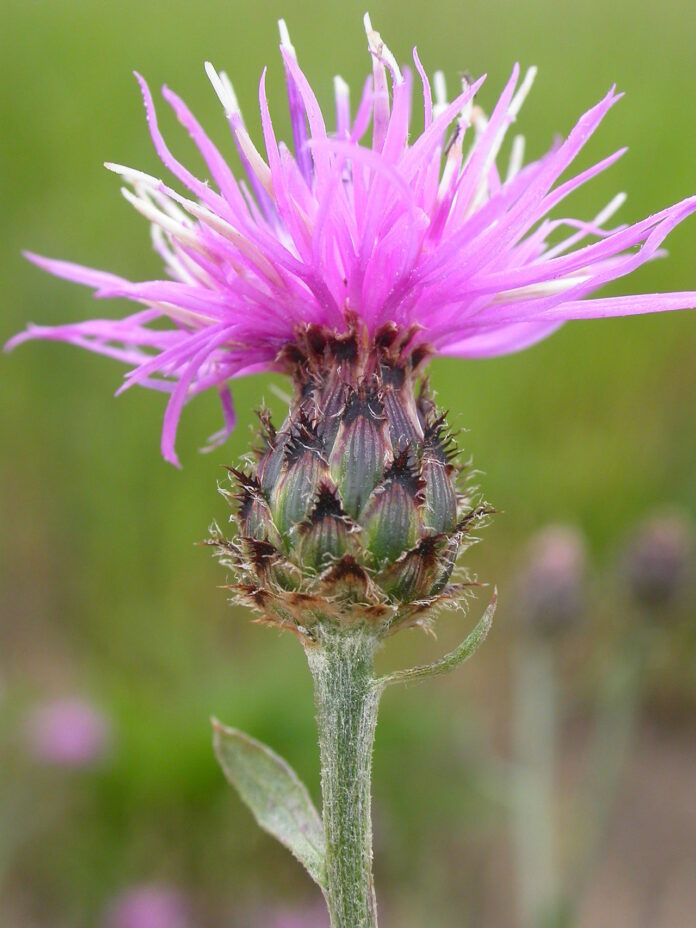
By Blaine Bug Crew
Idaho offers a variety of options when trying to identify this noxious invader. There is meadow, squarrose, spotted, diffuse and Russian, to name a few. Today we will be highlighting spotted knapweed in the Wood River Valley. This weed tends to be at higher elevations, while diffuse knapweed is on the hotter, drier floor. Some identifying characteristics set spotted knapweed apart from its cousins.
Spotted knapweed, Centaurea maculosa, is an herbaceous, short-lived perennial that reproduces entirely by seed. A plant may produce up to 25,000 seeds. Seeds are brown to black in color, smooth, and less than 0.25 inches long, and can remain viable in the soil for eight years. Flowers range in color from pink to light purple and bloom from July to October.
The flower head bracts are black-tipped, giving the plant its characteristic “spotted” appearance. Stems are typically 2 to 4 feet tall, with lower leaves that are deeply lobed and upper leaves more linear. Spotted knapweed ranges from moist rangeland habitats to abandoned areas. Thirteen biological control agents have been approved for release for the knapweed complex, which includes spotted knapweed.
Cyphocleonus achates is a robust biological control agent that can attack spotted (preferred host) and diffuse knapweeds. Cyphocleonus achates overwinter as larvae in roots, where they mine the vascular tissue and reduce knapweed density. Cyphocleonus achates adults emerge from June to mid-September and feed on knapweed leaves. The adults are 0.5 to 0.6 inches long and generally live 8 to 15 weeks. Each female deposits more than 100 eggs during her lifetime. Eggs hatch in 10 to 12 days, and larvae begin feeding on roots.
As you know, spotted knapweed is noxious and is easily spread. They all have different colors, but all have insect predators and can be stopped. While you are on a hike or walk and see the knapweed described here, please inform us by calling Kay Draper at (208) 727-7221. The Blaine Bug Crew would be pleased if you informed us.


